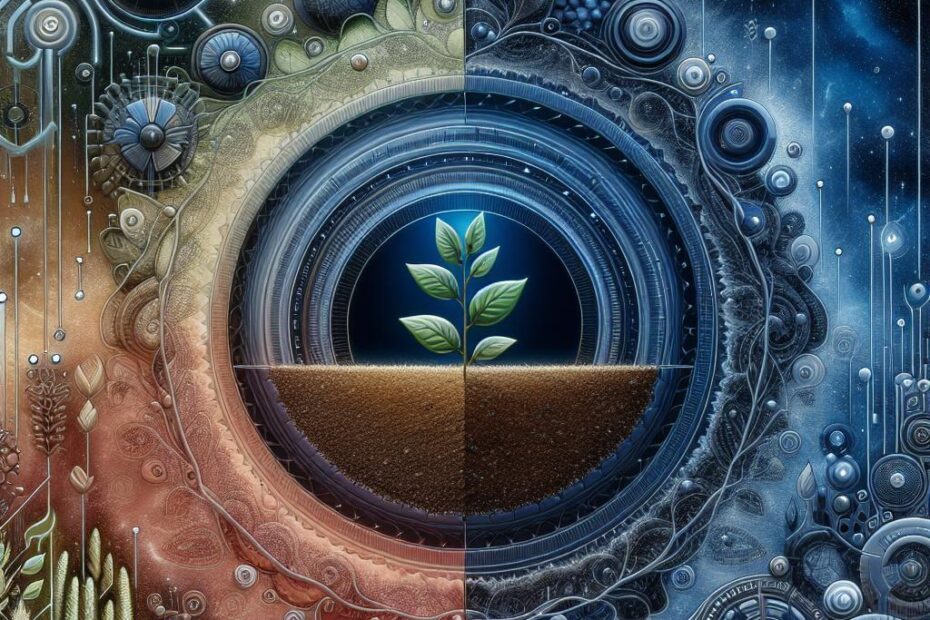Understanding the Difference Between Soil and Dirt
When it comes to gardening, landscaping, or agriculture, the terms “soil” and “dirt” are often used interchangeably. However, there is a distinction between the two that can have a significant impact on the success of your plants and crops. In this article, we will explore the differences between soil and dirt, their composition, properties, and how they affect plant growth.
What is Soil?
Soil is a complex mixture of minerals, organic matter, air, water, and living organisms. It forms over time through the weathering of rocks and the decomposition of plant and animal matter. Soil is a crucial component of the earth’s ecosystem, providing a habitat for plants, insects, microorganisms, and other organisms.
Key Characteristics of Soil:
- Rich in nutrients: Soil contains essential nutrients such as nitrogen, phosphorus, potassium, and micronutrients that are vital for plant growth.
- Porous: Soil has air pockets that allow for the exchange of gases between plant roots and the atmosphere.
- Moisture retention: Soil can hold water and nutrients for plants to access when needed.
- pH balance: Soil has a specific pH level that can affect nutrient availability for plants.
What is Dirt?
Dirt, on the other hand, is simply soil that is out of place. It lacks the essential nutrients, structure, and composition that make soil a fertile medium for plant growth. Dirt is often compacted, devoid of organic matter, and can be inhospitable to plant life.
Key Characteristics of Dirt:
- Poor structure: Dirt is often compacted, making it difficult for plant roots to penetrate and access nutrients.
- Lacks nutrients: Dirt may be deficient in essential nutrients needed for plant growth.
- Low water retention: Dirt may not retain water well, leading to dry and parched conditions for plants.
- Unbalanced pH: Dirt may have a pH level that is not conducive to plant growth.
Practical Tips for Improving Soil Quality:
- Conduct a soil test to determine the pH level and nutrient content of your soil.
- Amend your soil with organic matter such as compost, manure, or peat moss to improve its structure and fertility.
- Mulch the soil to retain moisture and suppress weeds.
- Rotate crops to prevent nutrient depletion and disease buildup in the soil.
- Practice sustainable gardening methods such as no-till gardening and crop rotation to maintain soil health.
Case Study: Comparing Soil vs. Dirt in Plant Growth
A study conducted by a team of researchers compared the growth of tomato plants in soil versus dirt. The plants grown in soil demonstrated healthier growth, larger yields, and better overall health compared to those grown in dirt. The soil-grown plants received the necessary nutrients, water, and air circulation needed for optimal growth, while the dirt-grown plants struggled to thrive due to nutrient deficiencies and poor soil structure.
Conclusion
In conclusion, soil and dirt may appear similar on the surface, but they have distinct differences that can impact plant growth and health. Soil is a complex, living ecosystem that provides essential nutrients, structure, and support for plants, while dirt lacks these crucial elements. By understanding the difference between soil and dirt and taking steps to improve soil quality, gardeners and farmers can create a fertile environment for plants to thrive and flourish.
By following the practical tips and best practices outlined in this article, you can ensure that your soil is healthy, nutrient-rich, and conducive to plant growth. Remember, healthy soil leads to healthy plants, which can lead to bountiful harvests and beautiful gardens. So, next time you’re working in your garden or field, remember the importance of soil and the role it plays in the success of your plants.
